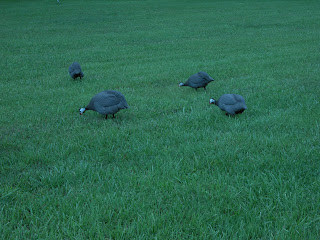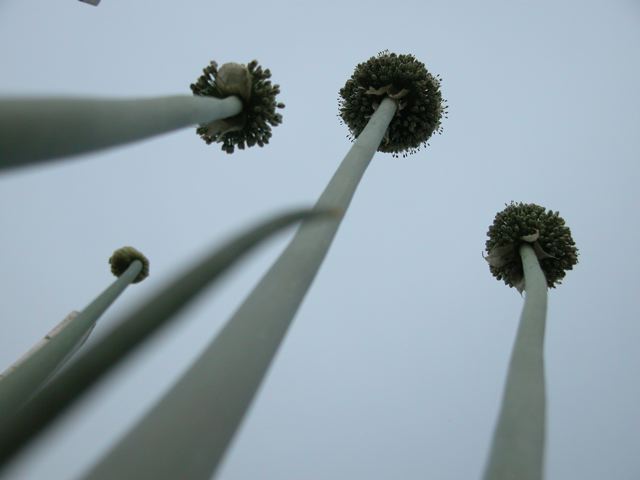 The source of guilt AND motivation.
The source of guilt AND motivation.This post has been floating in my head for a long time now.
I was on the phone with my mother Sunday, trading tales, when she said, "don't you just love this [mild] weather? I guess global warming does have an upside, doesn't it?"
Now, my mother is a terminal optimist. Her motto, quite seriously, is Marty Feldman's line from
Young Frankenstein: he played Igor, and, when queried by Gene Wilder's character about his hunchback, said, "What hump?" She cannot help herself. That said, she does understand that coal-burning power plants like her own really do compel you to save electricity by at least buying compact fluorescent bulbs and adjusting the thermostat all year. She has reset her sprinkler system, and I am trying to wean her off her green lawn love. It is a small gesture.
But frankly? My mother and [name redacted for family peace] have an enviable lifestyle. The [redacted ones] especially, God love them, don't practice conspicuous consumption, practice instead what I call Entitled Consumption. You know: we worked hard all our lives dammit so therefore we SHOULD be able to...fill in the blank consumptive habit. Maybe they are tinged with a bit of planetary guilt, but in reality, they won't live long enough for their lifestyles to be changed in any measurable way to them.
Me? LOADS of guilt. Especially since I became a mother myself: I realize SO VERY WELL that my daughter will not live in the same cushy world her grandparents, uncles, and parents had. The damage, in so many ways, was done long before she was born. Whether she grows up to resent the hell out of those who have gone before, soiling the planetary nest as we go, is yet to be seen.
I can only do what I can do. Moving to this farm has helped lighten our load (and my guilt) considerably. Thumbing my nose at industrial agriculture by growing my own has helped both our health and our wallets, and it certainly has challenged me in many ways to both show how easy it is to do, and to progressively do more. This blog is my small attempt to buck up and teach. But really, our lives, they are going to be a-changing. And I unfortunately have not inherited my mother's optimism. It is a lot more work, I know, to be a pessimist, but people, there is no quick fix to our problems. There are small gestures that, if taken collectively, will make a small impact. With the rest of the developing world following us by imitating our lifestyle, from hamburgers to SUVs, our little gestures are but a trifle, a drop in the ocean.
I am the bridge between the used to be and the future. I will see my parents' generation die off, and hopefully will see their habits die with them. I will see my daughter grow up in a world where consuming less won't be a matter of personal do-gooding preference but a matter of global imperative. Who knows if I will live long enough to see my daughter's own progeny be born and grow, because, let's face it, at 38 I was an old bat to be giving birth to
her. But if I do live that long, I hope some solutions have been undertaken, Manhattan project-wise, going-to-the-moon-wise, to solve some of our global screwups, because, really, I don't want my succeeding generations to be cursing my name.
And I know my kid will at least know how to grow her own food, raise and slaughter her own chickens and make her own bread. This, this I can do.
You know, I do wish this blog could be something as light and simple as a documentation of the pretty flowers and luscious vegetables I grow. Maybe this could've been the case 15 years ago. But fifteen years ago, there were no blogs, and I didn't own a farm. I apologize to all of you whom I have potentially offended here in this post. I simply do not see enough being done. We're all still arguing about if things are really changing, whilst we still go about with our spendthrift habits. (I am not above reproach myself, jetting about hither and yon.) But really.
Let's all get busy, doing what little we can do.






















